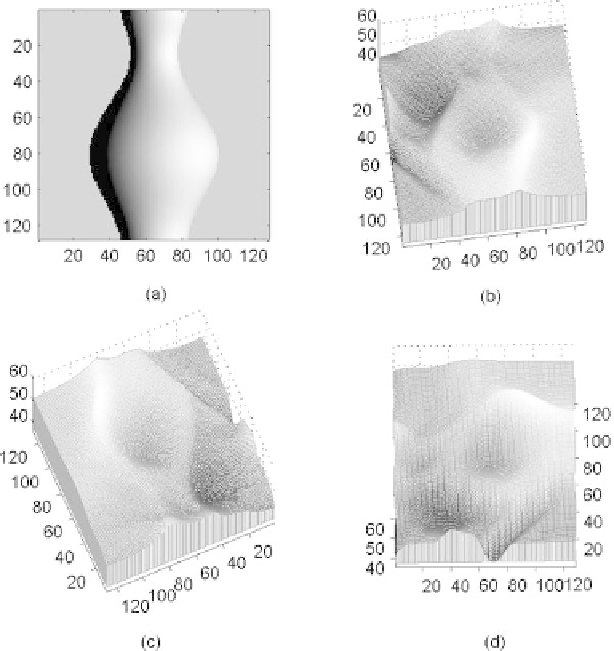Biomedical Engineering Reference
In-Depth Information
Figure 5.4:
Zheng-Chellappa's linear SFS algorithm applied to the synthetic
vase image. (a) is the input image with light source (
x
=
1,
y
=
0,
z
=
1). (b),
(c), and (d) are the reconstructed surface from three different directions.
from the experiment that Zheng-Chellappa's algorithm does encounter some
difficulties when the input image is complex. This observation is also true
even if we used the simplest light source direction. We expect this experiment
to inform the readers that SFS problem is indeed one of the most difficult prob-
lems in computer vision. No perfect, or even satisfactory, solution has been
proposed yet.
We summarize this section with a few words about the advantage and disad-
vantage of these two methods we introduced in this section. Pentland's method
uses FFT and IFFT to calculate the depth map. This makes the algorithm rela-
tively nonsensitive to the initial values. However, there are a few disadvantages:
(1) When the light source direction and the viewing direction are similar, the
Fourier transforms of
p
2
and
q
2
will have a doubling effect in the frequency

